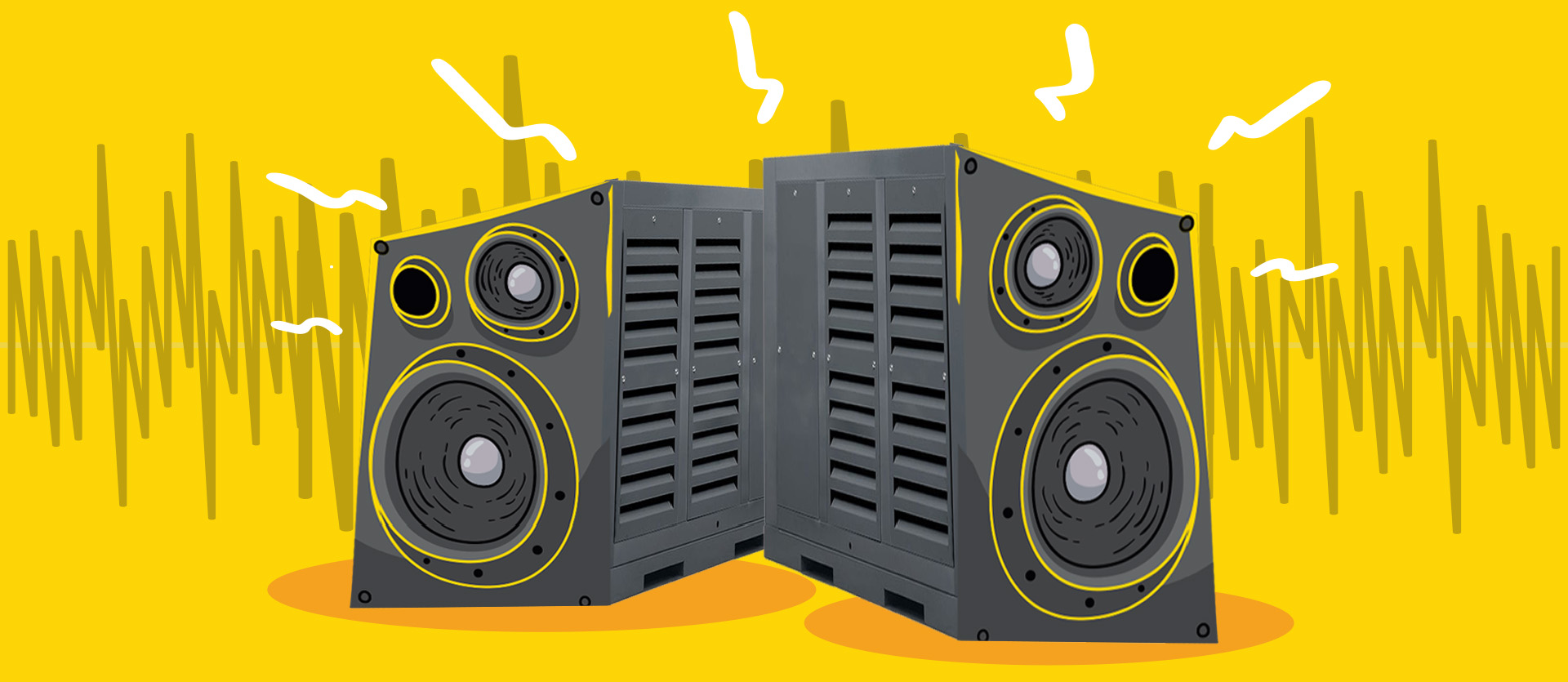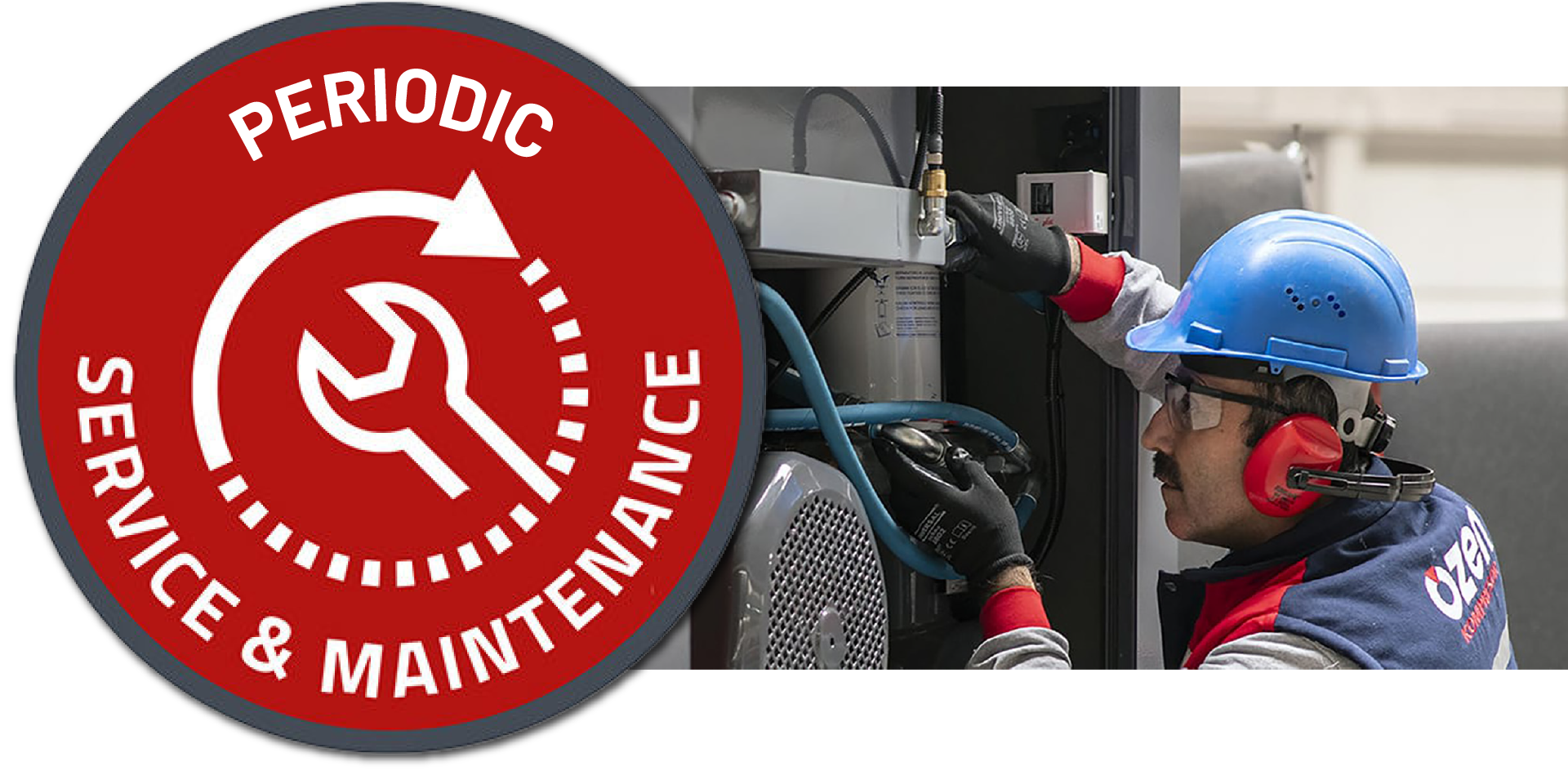Compressor Noise and Its Causes
24 June 2023, Saturday

Compressors require regular maintenance to ensure a long service life and efficient operation. When compressors are not operated in an ideal way or periodic maintenance is neglected, noise may occur in the compressor over time. The compressor noise is also heard under normal conditions. However, when the compressor is not used optimally, compressor noise can reach uncomfortable levels above normal conditions. In this article, we will try to explain the causes of noise in the compressor in detail.
Why Does a Compressor Make Noise During Operation?
When the compressor starts to operate noisily, compressor users ask the common question "Why does a compressor make noise?" In fact, there is no single answer to the question of why a compressor makes noise. The causes of noise in the compressor may vary. Here are the answers to the question of why the compressor makes noise;
- - The first thing to do is to check the legs of the compressor if it is running noisily. The compressor contains moving parts, any loosening of the legs will cause a clearance which will end up with noise.
- - The second thing to consider if you hear noise in the compressor is maintenance. Noise is inevitable with poorly maintained compressors. Compressors contain oil, regardless of whether they are lubricated or oil-free. This oil is used to prevent wear and noise when the components come into contact with each other. Depending on the frequency of use of your compressor, you shall always perform quarterly, semi-annual and annual maintenance as recommended by the manufacturer. If you hear a noise from a compressor that you have neglected to maintain, immediately turn off the compressor and contact an authorized service center. Because this noise in the compressor indicates that the oil has lost its properties and the components are causing wear on each other. If the compressor continues to be used in this way, it will unfortunately complete its service life. Again, when the filters that need to be replaced within maintenance intervals in the compressors are not replaced, this causes noisy operation.
- - Another reason for the compressor to make noise is the lack of a suitable operating conditions in the business. Suitable working conditions shall be provided to ensure more efficient operation of the compressors. A compressor room shall be available in the facility to ensure proper operating conditions. If the compressor is running in a very hot or very dusty environment, this will cause the compressor to make more noise.
- - Make sure that compressors are installed correctly. If the compressor makes noise, particularly after maintenance or after initial installation, this is certainly caused by an incorrect installation. At this point, make sure that the correct installation is carried out by seeking support from an authorized service.
- - Another reason for noise in the compressor is blockage in the pipes. Blockage in the pipes would prevent the compressor from operating properly and cause compressor noise. Therefore, you shall always inspect the compressor piping.
- - Compressors accumulate a certain amount of water and oil in the waste tank. This area shall be cleaned on a regular basis. If the cleaning period is exceeded, it will cause noise in the compressor.
- - If the noise in the compressor is not caused by any of these reasons, there may be a problem with the moving parts of the pistons or other components.

How to Perform the Periodic Maintenance of a Compressor
Periodic maintenance is the ideal way to prevent compressor noise and extend the service life of the compressor. You can request technical support by contacting the authorized services of the compressor to have the technical maintenance of the compressor performed.
The air filter of the compressor shall always be replaced during periodic maintenance. There are two air filters, one at the inlet and one at the outlet, in order to circulate clean air inside the compressor and to return clean air to the external environment. Both the air taken from the atmosphere and the air compressed by the compressor pass through these air filters. Impurities in the air such as water, oil, pollen and dust accumulate in the air filter. In this context, the air filter in the compressors shall be replaced as per the operating time and frequency of the compressor. Failure to change the filter would adversely affect air quality and shorten the service life of the invisible components of the compressor.
Another point to be considered while performing periodic maintenance on the compressor is the compressor oil. There are various moving parts operating in interaction with each other inside the compressors. There is a lubrication system so that these components do not wear each other out as a result of their movements with respect to each other. However, the oil used in the compressor also has a service life depending on the frequency of use. In case of a compressed air system that is not operated very frequently, replacement of the oil can be limited to once a year. However, if you are using the compressed air system actively in your business, it may be necessary to replace the oil in quarterly or semi-annual periods without waiting for the annual maintenance. Failure to maintain the oil regularly causes the working components of the compressed air system to wear each other. As a result of this wear, your compressed air system will no longer work efficiently and after a certain period of time it will reach the end of its service life.
Another part that is replaced during the preventive maintenance of the compressor is the oil filter where the oil is filtered and cleaned. The oil in the compressed air system we mentioned above is used after it is filtered through this oil filter. This prevents the presence of undesirable substances in the compressed air. However, oil is constantly being circulated in the compressor. This causes the oil filter to operate actively and to lose its function over time. The oil filter shall also be replaced at the same time as the oil is replaced.
It shall be inspected whether there is any leakage in the air compressor during the compressor maintenance. It shall also be checked whether there is a blockage in the pipes during the inspection for leakage.
What is the Ideal Operating Environment and Installation for a Compressor?
It is very important to avoid hurrying during the installation phase. First, you need to decide exactly where to place the components of the compressor. Sufficient space and air circulation in this space shall be provided for the operation of the air compressor. You need an experienced installation team to install the air compressor properly. The installation of the compressor and the periodic maintenance to be carried out after installation shall be performed by experienced teams in accordance with the instructions provided. The surface on which the air compressor is to be placed shall not be inclined, rough or hard. If the required layout is not provided, there is a possibility of noise resulting from the vibration and contact with the ground. You may easily solve this problem by installing sound cushions on the legs of the air compressor. The air compressor shall be placed only once. Then it shall be installed in such a way that it cannot be moved in any way. Thus, the location of the compressor shall be chosen in a way that is both suitable for the compressor and suitable for the operation. The transportation of the compressor is as important as its placement. The air compressor shall be specially protected to prevent it from being vibrated during transportation and to protect it from external factors. During transportation, it can be carried comfortably without too much vibration using a box.
What Shall Be Done If the Compressor is Noisy?
In case of noise in the compressor, the first thing to do is to cut off the compressor’s power. After disconnecting the power, a general visual inspection may be carried out to identify the problem. However, do not rely on trial and error at this point. Do not start the compressor until you are sure that you have solved the problem. If you cannot observe or find a problem, always contact an authorized service for general inspection and maintenance.
How to Tell If the Compressor Operates Noisily?
If your compressor is running much more noisily than normal and is vibrating violently, you shall always consult an authorized service. Compressors normally run noisily, but if the compressor sounds louder than normal, particularly if a knocking compressor noise is present, you shall always request support from an authorized service.
